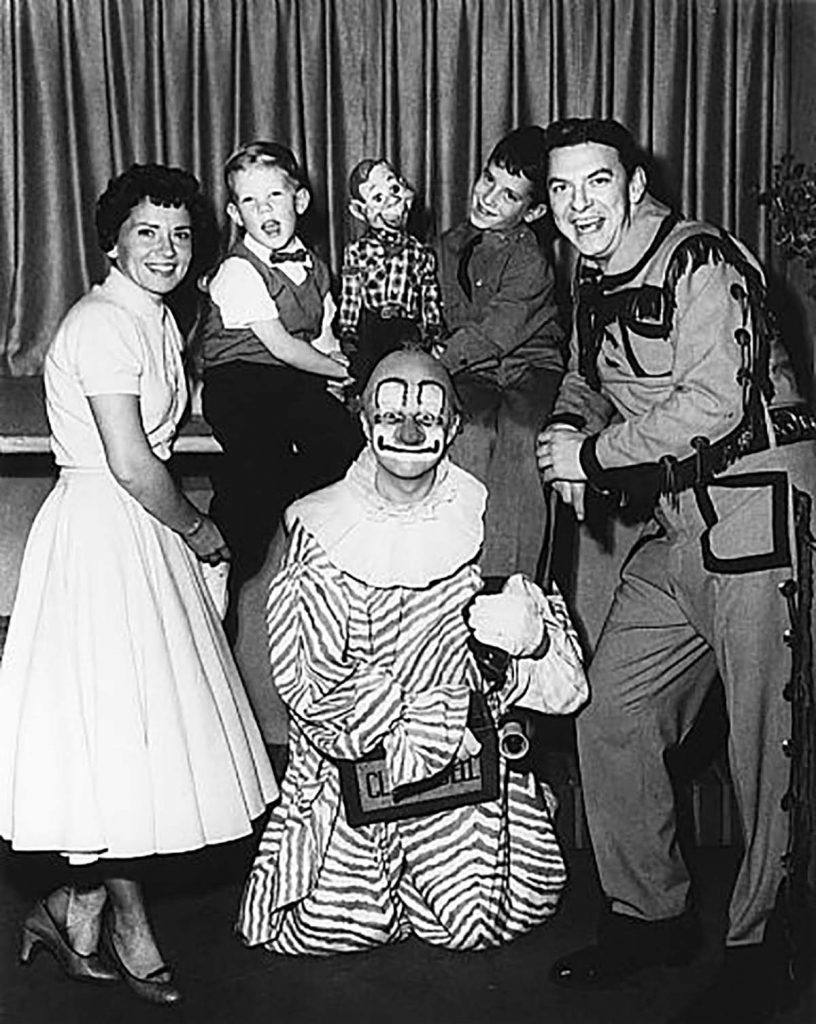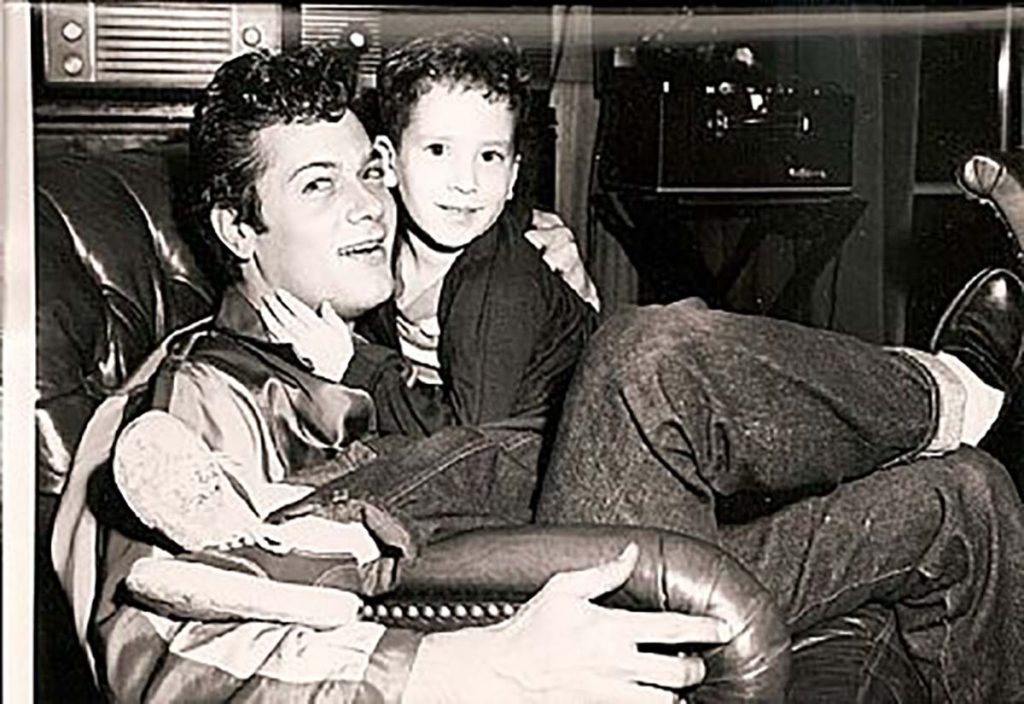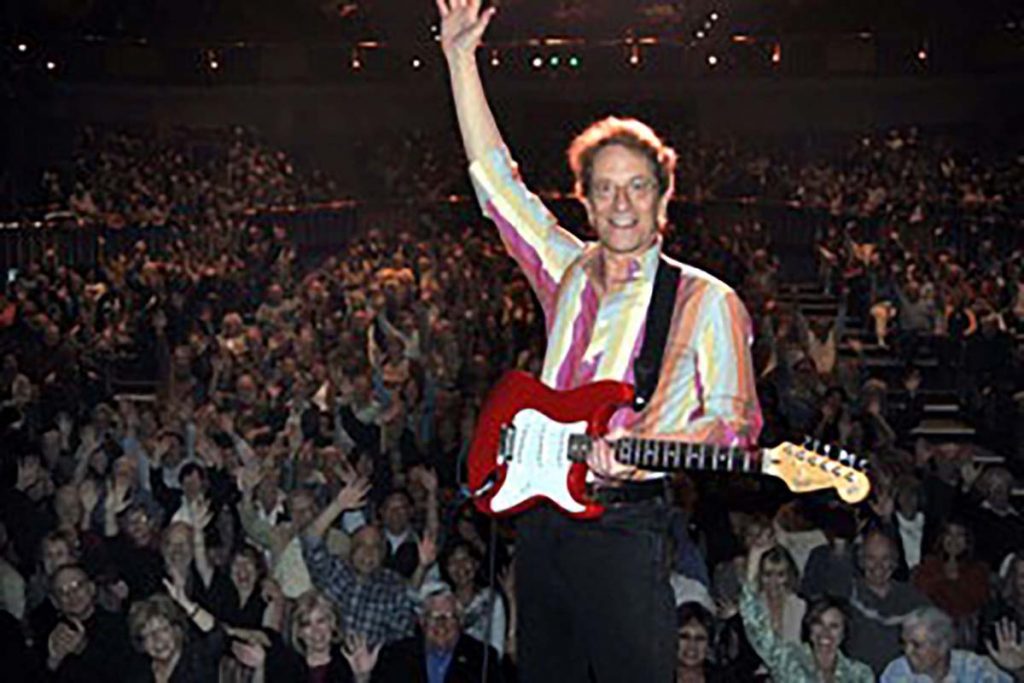On Jan. 16, 1965, a jangly little number called “This Diamond Ring” found its way onto Billboard magazine’s Hot 100. A few weeks later, it was a monster hit, holding down the No. 1 spot on that chart and signaling the arrival of its creators, Gary Lewis and the Playboys, onto the national rock ’n’ roll scene.
The son of famed comedian and filmmaker Jerry Lewis, Gary Lewis quickly became a star in his own right, going on to record such fondly remembered, Top 40 fare as “Save Your Heart for Me,” “Count Me In,” “Everybody Loves A Clown” and “She’s Just My Style” while touring extensively and appearing on television and in movies with his Playboys.
During those days, he also began to develop strong ties with Tulsa musicians.
Unsurprisingly, Leon Russell came along first. Then a ubiquitous presence on the West Coast music scene, Russell not only arranged Lewis’ singles; he also co-wrote a few and played on several of the band’s recording sessions, including the first one, which produced “This Diamond Ring.” Lewis was a singing drummer then, but that combination wouldn’t last.
“After about a year, I decided that I didn’t want to play drums any more; I wanted to come up front and see who I was playing to,” Lewis says. “So I needed a drummer. Leon, being from Tulsa, knew all the great Tulsa players, and Jim Keltner, who was living in LA, was from Tulsa. Leon knew how to get in touch with him, so we hired Jim Keltner to play drums.
“That’s how the Tulsa connection started. Then, over the years, when we needed various changes in the band, Leon always called Tulsa and got the right people.”
During much of the band’s time as a hit-making act, most of the Playboys were Tulsans: lead guitarist Tommy Tripplehorn (father of actress Jeanne Tripplehorn); bassist Carl Radle; and Keltner, later replaced by another T-town drummer, Jim Karstein. With Lewis at the helm, the group tallied eight Top 20 hits from the beginning of 1965 through the latter months of ’66 – a remarkable achievement by any standard.
Those were also the days of the military draft and, as Elvis Presley had shown us, even rock ’n’ roll stars weren’t exempt. Inducted into the Army, Lewis began his two-year stint on New Year’s Day, 1967; after his discharge, he tried to pick up where he left off – with some success. His version of the early ’60s Brian Hyland hit “Sealed with A Kiss” hit went to No. 19 on the Billboard list in late 1968. It was, however, his final Top 40 record to date.
“When I got out, things had kind of changed for me,” says Lewis, who lives near Rochester, New York. “The popularity wasn’t quite there any more because of the heavier rock ’n’ roll – Jimi Hendrix, Janis Joplin, that kind of stuff. So I decided, ‘Well, I’m going to Tulsa and just hang with the good musicians.’ I wanted to do some gigs and just be a guitar player.
“I didn’t want to be myself. I just wanted to pay some dues and learn, get my chops, you know. And I wanted to hang around the good people because if you hang around the good people, the good musicians, you push yourself to try and become that. So I started living in Tulsa, and that’s where I met everyone who would eventually be in the group Medicine with me.”
Lewis’ way to a new band had been paved by still another music figure from Tulsa, Gordon Shryock, who worked in the Los Angeles music industry when Lewis began thinking about moving to Oklahoma. Shryock not only encouraged him, but suggested another member, Billy Cowsill, who had left his popular family band, the Cowsills.
“I knew Cowsill because he’d been a Playboy,” Lewis says. “I believe it was in ’69. We were going over to Hawaii and playing for eight days, and I needed a guitar player, so I just asked him. I had no idea Gordon wanted him in the band. So when he mentioned him, I said, ‘Yeah. Yeah. He’s pretty good.’”
So, with two well-known recording artists as frontmen, Shryock assembled the rest of Medicine by drawing from the thriving Tulsa music scene – the husband-and-wife duo of Larry and Ann Bell (on keyboards and vocals, respectively) and a rhythm section consisting of two drummers, Bill Boatman (who had worked in a later version of the Playboys) and Gary Sanders, along with percussionist Valentino Pina. Lewis brought in singer Dennis Janes, whom he describes as “a friend of mine from LA who always wanted to sing, so I gave him a shot. He ended up as just a background vocalist with Ann and Larry Bell.”
At one point, many of the band members, including Lewis, lived in the house of Shryock’s mother.
“That was at 21st and Zunis,” he says with a laugh. “I don’t know how I even remember that.”
Lewis was installed as the band’s lead guitarist with Cowsill the primary vocalist.
“He sang all the leads on the original material we did,” Lewis says. “But even if I didn’t want to, I had to do my hits because people knew me and they wanted to hear those tunes. I was geared more toward original music for Medicine, but out of all my hits, I picked out the four biggest ones, and we mixed them in with the original stuff.”
Medicine, he adds, “played mostly club gigs and outside festivals. We drove to Kansas and Nebraska, to places I guess were concert halls. They were huge, but everybody danced. There was no seating.”
When he didn’t work with the band, Lewis sometimes performed with other musicians around town, including the then-queen of the Tulsa club scene, vocalist Gus Hardin.
“I sat in on drums, though,” he says. “Those were way better guitar players than me. I didn’t even want to try it.”
Even with a good number of jobs coming along, there were simply too many musicians in Medicine for anyone to make any real money. So Shryock, Medicine’s business manager and bassist, tried to raise the stakes by getting a corporate sponsorship, even though, Lewis says with a chuckle, “we were a little too scruffy for that. We all met in a suite in a Marriott somewhere and talked to the bosses, and they just didn’t go for it. So there we were. And pretty soon everybody, one by one, just started falling out.”
(An advertising poster from late 1970, with some of the members’ photos blacked out, has sometimes raised the notion that three of the dropouts were Karstein, J.J. Cale and Jimmy Markham. None of those noted Tulsa musicians, however, was a member of Medicine.)
“When it failed,” Lewis says, “it was over, and I just had to start from the bottom and get another set of Playboys.”
He did exactly that, and Gary Lewis and the Playboys remain a popular concert attraction – some 55 years after the sessions that produced the band’s first hit. And if his couple of years in Tulsa only amount to a footnote in an extraordinary career, it’s nonetheless a time and place Lewis remembers with fondness.
“Of course, it was advantageous; it helped me get better at the instruments I played,” he says. “And just hanging with Tulsa musicians and playing in the same band – that was a complete and total thrill.”





























